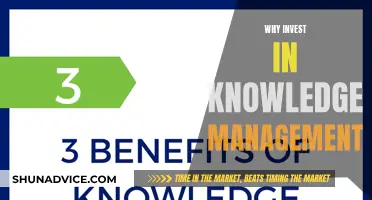
Investment advisors are financial professionals who provide investment recommendations or conduct security analysis in exchange for a fee. They are required to register with the Securities and Exchange Commission (SEC) if they manage a certain amount of client assets, and must also register at the state level. Investment advisors owe a fiduciary duty to their clients, meaning they are required to put their clients' interests first at all times. They must also avoid any real or perceived conflicts of interest. However, the services provided by investment advisors may introduce certain risks. For example, the use of new technologies and the competition with robo-advisors may pose a risk to traditional financial advisory practices. Additionally, there is a potential challenge in the integration of wealth management and tax services, which are two interconnected but traditionally separate fields. Other risks include human capital management, increased regulation, and scale and capacity issues.
| Characteristics | Values |
|---|---|
| Definition | Any person or group that makes investment recommendations or conducts securities analysis in return for a fee |
| Registration | In the U.S., must register at the state level and with the SEC if they manage $100 million or more in client assets |
| Fiduciary Responsibility | Must uphold standards of fiduciary responsibility and put their clients' interests first at all times |
| Conflicts of Interest | Must avoid any real or perceived conflicts of interest |
| Compensation Structure | Paid through fees which cause their success to be linked to that of the client |
| Authority | Often have a level of discretionary authority to act on behalf of their clients |
| Record-Keeping | Required to maintain and keep current various records, including receipts, disbursements journals, financial statements, written communications, etc. |
| Disclosure | Must disclose all information relating to the relationship between an adviser and a client |
| Audits | Subject to periodic, sometimes unannounced, audits by regulators to determine compliance with licensing, books and records, and anti-fraud requirements |
What You'll Learn

Conflicts of interest
To address these issues, several laws and regulations have been implemented. The Employee Retirement Income Security Act (ERISA) sets standards for retirement plans and includes the requirement for a fiduciary duty and the prohibition of self-dealing. The Dodd-Frank Wall Street Reform and Consumer Protection Act introduced the concept of a fiduciary standard for all financial advisors providing investment advice to retail clients. This act, along with the Sarbanes-Oxley Act, helps control conflicts of interest by making rules stricter for advisors.
Additionally, regulatory bodies such as the Securities and Exchange Commission (SEC) and the Financial Industry Regulatory Authority (FINRA) enforce regulations and ensure that investment advisors disclose any potential conflicts of interest to their clients. According to the SEC, conflicts of interest should be addressed through a robust, ongoing process that is tailored to each conflict. This includes identifying, mitigating, and disclosing conflicts, as well as establishing policies and procedures to manage them.
To navigate conflicts of interest effectively, financial advisors should adopt strategies that prioritise ethical behaviour and transparency. This includes establishing strong ethical guidelines, implementing conflict management policies, and utilising independent third-party oversight. By doing so, advisors can build long-lasting client relationships based on trust and transparency.
It is worth noting that conflicts of interest are not always easy to identify, and they can vary depending on an advisor's business model, service model, or compensation model. Therefore, it is crucial for individuals seeking financial advice to be proactive in understanding the conflicts their advisor may have and how they can affect them. Asking advisors direct questions about their conflicts of interest and how they address them can help individuals make informed decisions.
Emergency Savings: Where to Invest for Peace of Mind
You may want to see also

Charging unreasonable fees
Charging fees that are too high can introduce risks for investment advisors. While there is no one-size-fits-all fee structure, it is important for advisors to strike a balance between charging too much and too little. If their fees are too high, they may drive away business. If they are too low, clients may perceive their services as being less valuable.
Fees for investment advisors can be charged as a flat fee, a percentage of assets under management (AUM), or an hourly rate. The average fee for a financial advisor's services is around 1% of AUM annually. This can vary depending on the size of the account and the net worth of the individual. High-net-worth individuals may pay less due to a sliding scale fee structure.
Actively managed portfolios tend to have higher fees as they involve a team of investment professionals buying and selling holdings. In contrast, passively managed portfolios, where investments are bought and held long-term, tend to have lower fees.
Commission-based advisors earn money through the products they sell, whereas fee-based advisors charge per service. Fee-based advisors tend to provide unbiased financial advice as they have a greater incentive to grow their client's assets.
It is important for clients to understand the different types of fees and find an advisor who fits their criteria and provides value for money.
Who Runs Berkshire's Investment Portfolio?
You may want to see also

Regulatory compliance
- Registration: Investment advisors must register with the appropriate regulatory authorities, either at the state level or with the Securities and Exchange Commission (SEC), depending on their assets under management (AUM). The threshold for SEC registration is generally $100 million in AUM, but there are exceptions, such as for advisers to investment companies registered under the Investment Company Act of 1940.
- Performance Claims: Investment advisors should be cautious when making claims about performance. The Marketing Rule allows for certain performance-related statements but prohibits guaranteeing results or removing context around results. Hypothetical performance should not be presented in an open forum.
- Chief Compliance Officer (CCO): While it is technically possible to outsource the CCO role, it is not recommended. The SEC expects the CCO to be someone with authority in the firm who is involved in decision-making and can enforce compliance.
- Policies and Procedures: Investment advisors are required to have written policies and procedures in several key areas, including portfolio management, disclosure accuracy, safeguarding client assets, record-keeping, privacy protection, marketing, fee assessment, and business continuity.
- Cybersecurity: The SEC has proposed the "Cybersecurity Risk Management, Strategy, Governance, and Incident Disclosure" ruling, which would require investment advisors to implement policies to detect and prevent cybersecurity incidents, provide periodic reports, and promptly disclose cyberattacks.
- Communication Archiving: Investment advisors should archive all communications with clients and prospects, including emails, social media messages, texts, and other platforms. This helps ensure compliance and provides a record in case of disputes.
- Testimonials and Reviews: With the new Marketing Rule, investment advisors can now request testimonials and reviews from clients, but they must be careful to avoid "cherry-picking" and provide all clients with an equal opportunity to provide feedback.
- Remote Work: The shift to remote work has introduced new compliance challenges. Investment advisors should supervise their employees, address cybersecurity risks, implement password protection protocols, and establish policies to secure sensitive information, especially when employees are working outside the office.
- Compliance Culture: Compliance is everyone's responsibility in an investment advisory firm. While the CCO plays a crucial role, all team members should be aware of compliance requirements and work together to maintain a culture of compliance.
India Nifty 50: Tracking Index Funds for Smart Investments
You may want to see also

Technology
The technology sector is known for its high volatility, rapid innovation cycles, and significant return potential, making it prone to high risks. Technology investment risk refers to the potential for financial loss or negative impact resulting from technology solutions that underperform, become obsolete, or incur unexpected costs. This risk is inherent in all investments but is more prominent in the technology sector due to its dynamic nature.
Types of Technology Investment Risks
- Market Risk: The value of technology investments can fluctuate due to changes in market conditions, such as shifts in consumer demand, economic downturns, or the emergence of new technologies.
- Regulatory and Legal Risks: Non-compliance with relevant regulations can lead to legal penalties, operational disruptions, and reputational damage. The technology sector is highly regulated due to concerns about data privacy, cybersecurity, and intellectual property protection.
- Cybersecurity Risk: With the increasing sophistication of cyber threats, data breaches, hacking incidents, and unsecure data practices pose significant risks to financial losses, disruption of operations, and damage to an organization's reputation.
- Dependency on Key Personnel: Technology companies, especially start-ups, often rely heavily on a limited group of individuals or a single charismatic leader. Poor behaviour, mismanagement, or the departure of key personnel can significantly impact the company's performance and investor confidence.
- Geopolitical and Economic Risks: Global events, economic shifts, and changing geopolitical landscapes can influence the performance of technology investments, especially in the context of international supply chains and cross-border data flows.
Strategies to Mitigate Technology Investment Risks
- Diversification: Spreading investments across various technologies, sectors, and geographic regions can reduce the impact of adverse events in a specific area.
- Due Diligence: Conducting thorough research on potential investments, including their regulatory compliance, historical performance, financial health, and responsiveness to market changes, is essential for making informed decisions.
- Technology Foresight: Staying informed about emerging technologies, market trends, and regulatory landscapes can help anticipate shifts and make timely investment decisions.
- Risk Management Techniques: Investing in low-risk securities, setting realistic goals, and regularly monitoring investments can help manage overall risk exposure.
- Cybersecurity Measures: Robust cybersecurity practices, regular data backups, and staff training can mitigate the risk of data breaches and cyber-attacks.
- Legal and Financial Expertise: Engaging experts who can provide insights into the regulatory landscape and financial implications of technology investments is crucial for navigating potential risks.
- Flexible Exit Strategy: Having a well-planned exit strategy can help safeguard investments by minimizing potential losses and ensuring regulatory compliance.
The use of technology by investment advisors is also becoming increasingly important in retaining clients, particularly from younger generations. According to surveys, a significant portion of financial advisors plan to increase their technology investments, with a focus on AI-powered tools and integrated workflows. This shift towards technology is driven by the need to provide personalized financial advice and improve operational efficiency.
In conclusion, while technology presents significant opportunities for investment advisors and their clients, it also introduces a range of risks that must be carefully managed. By understanding the unique challenges posed by the technology sector and implementing effective risk mitigation strategies, investment advisors can harness the power of technology to enhance their services and better serve their clients.
Networking with Investment Bankers: Making the First Call
You may want to see also

Human capital management
- Understanding the value of human capital: Human capital is an intangible asset that can have a significant impact on a company's financial performance. It is essential to recognize that a company's value is increasingly derived from its people, especially in the knowledge-based economy.
- Incorporating human capital into business strategy: Companies need to align their human capital strategy with their overall business strategy. This means attracting, retaining, and developing workers with the skills and expertise necessary to execute their long-term goals and create value.
- Addressing human capital risks: Human capital risks can arise from careless hiring or retention practices, high turnover rates, and inadequate talent development. These risks can lead to increased costs, disengagement, morale issues, and reputational damage.
- Developing a robust human capital risk management strategy: A successful risk management strategy should be tailored to the specific needs of the business. This involves identifying the most significant human capital threats and implementing best practices to mitigate those threats.
- Leveraging data and analytics: Companies should utilize data analysis and advanced analytics to gain deeper insights into human capital risks. This includes tracking key metrics such as turnover rates, training investments, and employee engagement scores.
- Focusing on talent development: Talent development is crucial for effective human capital management. By investing in their employees' skills and providing opportunities for advancement, companies can improve retention, enhance employee satisfaction, and adapt to the changing nature of work.
- Understanding the human capital cycle: It is important to monitor the cycle of human capital within the organization, including the processes through which employees enter, develop, and leave the company. This can help identify areas where interventions or improvements are needed.
- Supervisor and employee relationships: The relationship between employees and their supervisors is a critical aspect of human capital management. Adequate training, support, and oversight of first-level managers can help reduce risks such as turnover, disengagement, and absenteeism.
By prioritizing human capital management and addressing the associated risks, investment advisors can build a resilient and high-performing workforce, ultimately contributing to the success and competitiveness of their business.
Investing in New York's 529: A College Savings Guide
You may want to see also
Frequently asked questions
An investment advisor is an individual or company that provides advice about securities to their clients in exchange for a fee. This can include making investment recommendations, conducting securities analysis, or managing investment portfolios.
There are several risks to consider when hiring an investment advisor. One is the potential for conflicts of interest, such as an advisor receiving compensation from other sources or having affiliations with broker-dealers or issuers of securities. Additionally, there is a risk of excessive fees, unreasonable investment recommendations, or unauthorized transactions. It is important to conduct due diligence and ask questions before hiring an investment advisor.
It is important to understand the regulatory environment and conduct thorough research before hiring an investment advisor. In the US, investment advisors are regulated by the Securities and Exchange Commission (SEC) or state securities regulators, depending on the amount of assets they manage. Reviewing an advisor's Form ADV, which discloses information about their business practices and potential conflicts of interest, is also crucial.
Investment advisors can provide valuable expertise in managing investment portfolios and helping individuals allocate money to profitable short- and long-term investments. They have a fiduciary duty to their clients, which means they are legally required to act in their clients' best interests and prioritize their clients' transactions over their own.
When choosing an investment advisor, it is important to consider your financial needs and objectives. Look for advisors with relevant certifications, such as Certified Financial Planner (CFP) or Chartered Financial Analyst (CFA). Conduct due diligence by checking their fee structure, values, performance data, and referrals. Reputable advisors will be transparent and provide clear information about their services and fees.







